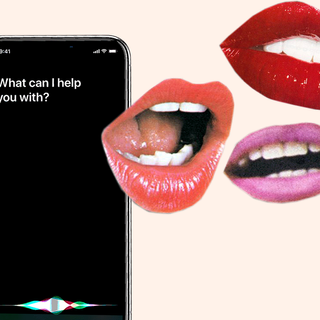Why we blink so frequently has long been the obsession of researchers, who simply could not figure out the evolutionary purposes of a seemingly inane, and involuntary bodily function. Scientists used to believe we blink simply to protect our eyes, to keep our corneas wet with tears and avoid dry eyes, but found we blink way more often –20,000 to 30,000 times, or equivalent to 10% per day — than we actually need to protect our eyes. The question is — why?
One 2013 study hypothesizes that blinks are “breakpoints of attention, such as the end of a sentence while reading, a pause by the speaker while listening to a speech, and implicit breakpoints while viewing videos.” Study participants were shown episodes of the English comedy show Mr. Bean, while their brain activity and blinks were recorded. The researchers found blinking inhibited the dorsal attention network of the brain (which deals with attention) and activated the default-mode network (which deals with introspection), suggesting that the body’s involuntary blinking movement is evolution’s generous way of giving us a break, albeit one that only lasts for one-tenth to one-hundredth of a millisecond. They hypothesized that blinks serve as a temporary respite from paying attention to an external stimuli, as a momentary escape to recharge and come back to the subject with fresher eyes and with stronger attention.
The momentary rest that spurred from blinking wasn’t simply because closing our eyes temporarily meant the absence of visual stimuli, study researchers said. They interspersed Mr. Bean video with blackouts as long as the duration of an average blink, but found the default network that triggered a resting time in the brain wasn’t similarly activated, which signalled to them that blinking served a larger purpose than simply blacking out for a tiny bit.
Related on The Swaddle:
Psychic Tears and the Science of Crying
One 2016 study, “Time Dilates After Spontaneous Blinking,” establishes a tenuous link between dopamine release and blinking rates. A high blinking rate has been associated with the release of dopamine in the brain, the feel-good hormone that is associated with happiness and pleasure. When we’re happy, time seems to fly by, and researchers say we might perceive time differently, when a high blinking rate increases dopamine levels.
Still other research supports this, finding the act of blinking warps our sense of time — but exactly how remains inconclusive, and the subject of several studies. According to a 2019 study, “Where Does Time Go When You Blink,” researchers separated participants into two groups of 50. One group was shown two flashing lights at 300 milliseconds apart, called a short interval, and another group was shown lights flashing 700 milliseconds apart, called a long interval. Then, they were asked to determine how far apart subsequent lights were flashing. They found that study participants who blinked immediately after they were shown a flashing light could not accurately determine the interval duration until the next light — they were more likely to call a short interval a long one, meaning, right after blinking, time had slowed down for them. This difficulty in estimating time happens because, during the blink itself, our perception of time speeds up at least 50 to 70%, Mark Wexler, author of “Default Perception of High-Speed Motion“, told New York Magazine.
Humans are quite terrible at calculating how much time is passing solely through our visual senses (or lack thereof), Wexler told New York Magazine. During interruptions in our vision, such as blinks, other senses, like hearing, kick in to inform our internal clock of the passing of time. Our sense of vision is highly inaccurate, Wexler said — what with blinks sending us to temporary vacations 15 to 20 times per minute — but our brain stitches together visual cues from before and after the blink, helping us perceive the world continuously.
While further research is required into all the reasons why we blink and the ways the act affects us, one thing’s for sure — there’s a lot going on behind the eyes.




